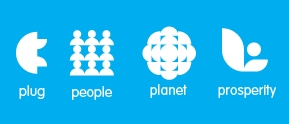Electric vehicles' other driver
Posted by Big Gav in better place, electric vehicles
The Business Spectator has an article on Better Place and their vision for the electric car industry - Electric vehicles' other driver.
It’s an ill wind that doesn’t blow someone some good. So the wannabe electric car industry sees the Gulf of Mexico oil well disaster in a different light to others.
Reports from the US say shares in battery companies and other EV component manufacturers have risen on the back of Barack Obama’s call for the monster spill to “drive a clean energy future".
Just how much the industry could benefit is illustrated by a forecast from American analysts Needham & Co that the market for lithium-based batteries could grow from less than a billion dollars next year to almost $US25 billion in 2015. Other analysts argue that high initial vehicle prices, limits on battery performance and constraints on rolling out recharging infrastructure present high hurdles for the EV business.
Here in Australia there is another driver for a shift to electric vehicles: the transport fuel trading deficit is officially forecast to rise from $16 billion a year now to $30 billion by 2015. Antony Cohen, chief financial officer of Better Place Australia, says the logical approach to the problem is to “stop using the stuff” rather than relying on accelerating other energy commodity exports to bridge the fuel gap and shifting to alternative sources of diesel.
EVs do not offer a quick fix, however. Cohen acknowledges that replacement of Australia’s 12 million passenger cars and light commercial vehicles will take 20 to 25 years, moving in to a higher gear mid-decade and mostly happening after 2020.
Cohen, previously KPMG’s leading energy consultant, sees an interesting nexus between the introduction of EVs and promotion of still-greater use of renewable energy in Australia. He estimates the 12 million vehicles will need about 36,000 gigawatt hours of electricity a year, equal to about 12 per cent of current power consumption. This, he suggests, could provide the impetus for a second-phase RET, coming between 2020 and 2030 (a time when the present scheme is designed to plateau at an initial 41,000 GWh).
What’s more, he points out, going down this road, using EV batteries for storage, teamed with a capability to manage the charging times through smart technology, could enable greater use of intermittent renewables in the generation mix rather than building, for example, more and more open-cycle peaking power gas turbines. (It is estimated that the current RET will require about 4,000 MW of open-cycle generation to be built this decade.)
“You get big emission reductions thrown in,” he tells me. “Probably about four tonnes of greenhouse gases per vehicle per year. And you don’t need a carbon charge, although imposing one on petrol obviously would accelerate EV adoption.”
Cohen has answers to the obvious barriers to this happening – such as consumer refuelling convenience and the capacity of the power grid to cope with mass recharging. Better Place, he says, will install charge spots and battery switch stations. Refuelling will be more convenient than finding a service station to buy petrol.
“Provision of a service that includes charge spots at homes and work places and battery switch stations as well as all of the renewable energy for a monthly fee,” he argues, “will ensure that the trade-off between capital costs and recurrent costs will not be an issue.”
Peak power problems will be avoided by smart systems that will recharge near-empty vehicles at once but delay supply to, say, three-quarters charged ones to times when overall demand is low.






